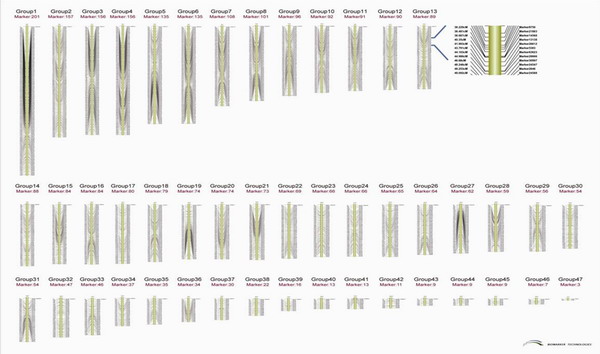A whole genome sequence of the common carp (Cyprinus carpio) has been revealed, announced in a press conference in Beijing on May 6, 2011, co-hosted by the Center for Applied Aquatic Genomics of Chinese Academy of Fishery Sciences, Heilongjiang Aquaculture Institute, and Beijing Institute of Genomics, Chinese Academy of Sciences. The common carp genome is composed of 100 chromosomes, the biggest number in species currently sequenced. It has been believed to be a tetroploid species with a physical size of approximately 1700 Mbp. Starting from late 2009, researchers have successfully completed the genome sequencing of a female common carp and obtained a high-quality sequence map with over 100 time coverage, using the whole-genome shotgun sequencing technology and novel methods. The sequencing generated an assembled scaffold N50 with a length of 404 kb, as well as over 70000 BAC end sequences, 1.66 million ESTs and a physical map of over 80000 BAC clones. The draft map covers 96.5% BAC end sequences, 96.2% ESTs and 95% physical map of the total carp genome. As one of the most important aquaculture teleost fish in the world, common carp and other closely related Cyprinidae species provide over 30% aquaculture production in the world. The whole genome sequencing of common carp provides the basic biological information of common carp that will be of significant value for the research of its gene diversity, variation and relations, consequently contributing for better quality and yield of the fishing industry in the future. A high-density linkage map of the carp genome
